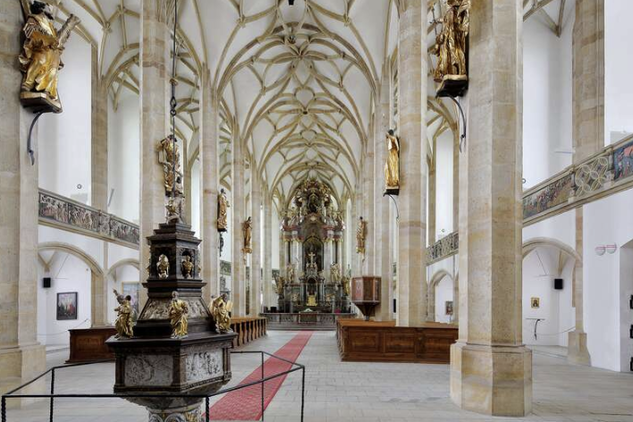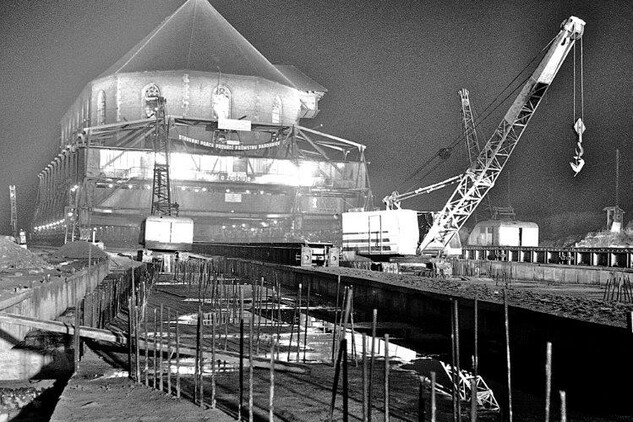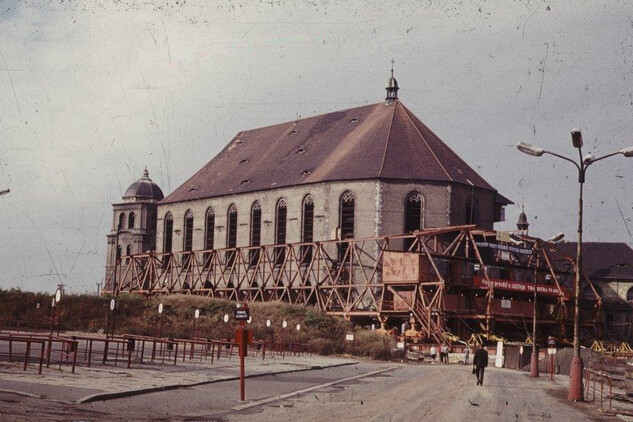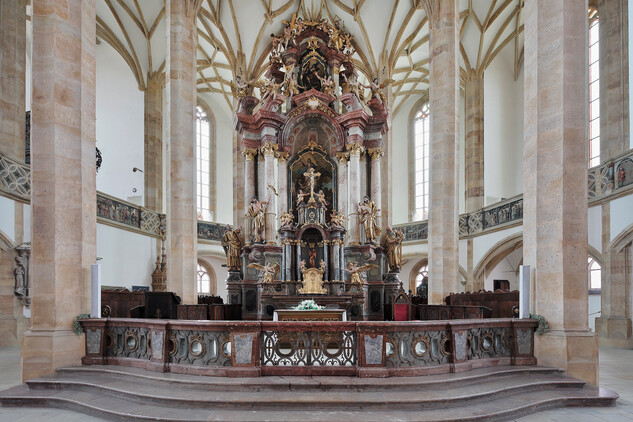History of the Church of the Assumption of the Virgin Mary
History and the transfer
Building of the gothic church of Assumption of the Virgin Mary began in 1517, after a fire in 1515 destroyed parts of the old town of Brüx and the original gothic basilica. The only part of the original structure that survived the fire was a part of the tower and an underground crypt. The architect of the new church was Jakob Heilmann from Schweinfurt.
A hall like interior is divided into three navals by massive columns. On the circumference of the choir there are 16 chapels separated by arcades, these are usually devoted to donors or contributors of the building. On the upper level, above the chapels, there is an empora, a gallery-like open pathway all around the inner side of the walls. It is decorated with polychromed renaissance reliefs with themes of Bible stories from the new and old testament. This is the only reliefed empora in the Czech republic, there are a few similar ones in Germany. The walls of the empora are made out of marlstone, however most of the other stone elements, like the columns, are made out of sandstone.
Building of the church took over a century, which is why there are both gothic and renaissance characteristics. The centerpiece of the building is the baroque main altar, from the first half of the 18th century. It's made out of colorful marble, with wooden polychromed statues.
On the inner parts of the main columns there are sculptures by Jan Adam Dietz, also from the first half of the 18th century, depicting Christ and the Apostles.
In the 18th century it was discovered there were massive coal reserves all around, and underneath the city. Mining of coal not only shaped the historic city throughout history, but also caused its ultimate demise.
In the 1960s the communist Czechoslovak government decided to demolish most of the original city Brüx and rebuild it elsewhere. Entirety of the historic city center was destroyed, and it was decided that the church would be moved. The interior of the building had to be reinforced for the move, the tower had to be taken down, all the preparations took about seven years. On the 30th of October 1975 the transport of the church began, the whole building weighing about 12.000 tons. It was on four rails, moved over uneven terrain, balanced by hydraulic rollers. The distance was 841,1 meters, average pace being about 2,16 centimeters per minute. The transport is documented in the Gold Book of Guinness Records as the heaviest object being moved on wheels.
In between the years 1983 and 1988, the church had to be completely renovated, the tower was built back. It was put on a new foundation. It was consecrated again in 1993.
Today the church stands next to the old hospital of the Holy Spirit, which has its own little chapel.
Quick contact
Are you lost? Don't worry, give us a call and we will help you.




